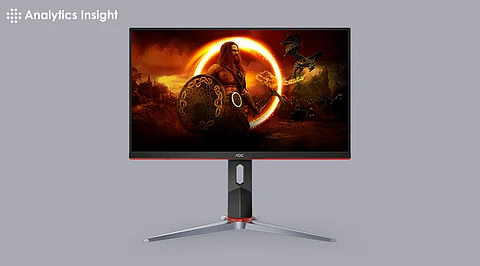

The technology for gaming is evolving at a rapid pace, and one topic that often sparks debate among enthusiasts and professionals is whether gamers really need 240-Hz monitors. For many gamers, upgrading hardware is about gaining an edge over the competition. But do these high-refresh-rate screens truly justify their cost? Let's explore whether 240-Hz monitors are a necessity or merely a luxury.
The refresh rate in doing Hz is the number of times the screen refreshes in a second. This means that if a 240Hz monitor refreshes 240 times per second, then it is 240Hz. The greater the refresh rate, the more viscous the images would be. It would also decrease blur and show sharper movement. It is appropriate for fast-paced reaction games, like shooting games, racing games, etc.
In competitive gaming, every millisecond counts. Professional esports players often advocate for high-refresh-rate monitors because they reduce input lag and provide a clearer, faster display of in-game actions. Games like Valorant, CS: GO, and Overwatch are prime examples where split-second decisions can mean victory and defeat.
The research studies and experiences of players indicate that monitors with refreshing rates as high as 240Hz improve tracking moving targets, aiming precision, and general responsiveness. The result is a visible difference in performance, especially in fast-paced shooter games.
The price difference between a 240Hz monitor and a 144Hz model can be significant. While 144Hz monitors have become increasingly affordable, 240Hz options still command a premium. For gamers on a budget, the added cost may not justify the incremental performance improvement.
Moreover, the law of diminishing returns applies to refresh rates. As you move beyond 144Hz, the perceptible improvements become subtler, especially for gamers who aren’t competing at a professional level. If you’re not consistently achieving 240 FPS in your favorite games, you won’t reap the full benefits of a 240Hz display.
Professional and aspiring players: Every bit of advantage counts for such players. A 240Hz monitor will provide the needed responsiveness to stay ahead of the competition.
High-end PC owners: If you have a gaming rig that can smoothly push 240 FPS at all times, then this is the monitor to experience the smoothest gameplay possible.
Fast-paced game enthusiasts: Players of shooters, racing games, or any other titles requiring quick reflexes are more likely to appreciate and notice the benefits of a 240Hz refresh rate.
The upgrade may not be worth it for casual gamers, narrative-driven players, or those primarily playing slower-paced titles. A 144Hz monitor offers excellent performance and affordability, making it the better choice for most users.
While 240Hz monitors undeniably offer top-tier performance, they’re not a must-have for everyone. The benefits are most apparent for competitive players with high-performance setups and a focus on fast-paced games. A 144Hz monitor is more than sufficient for the average gamer to enjoy smooth and immersive gameplay.
Ultimately, whether a 240Hz monitor is worth it depends on your gaming priorities and budget. The investment could pay off if you’re chasing every possible edge in competitive gaming. For everyone else, it’s a luxury rather than a necessity.
